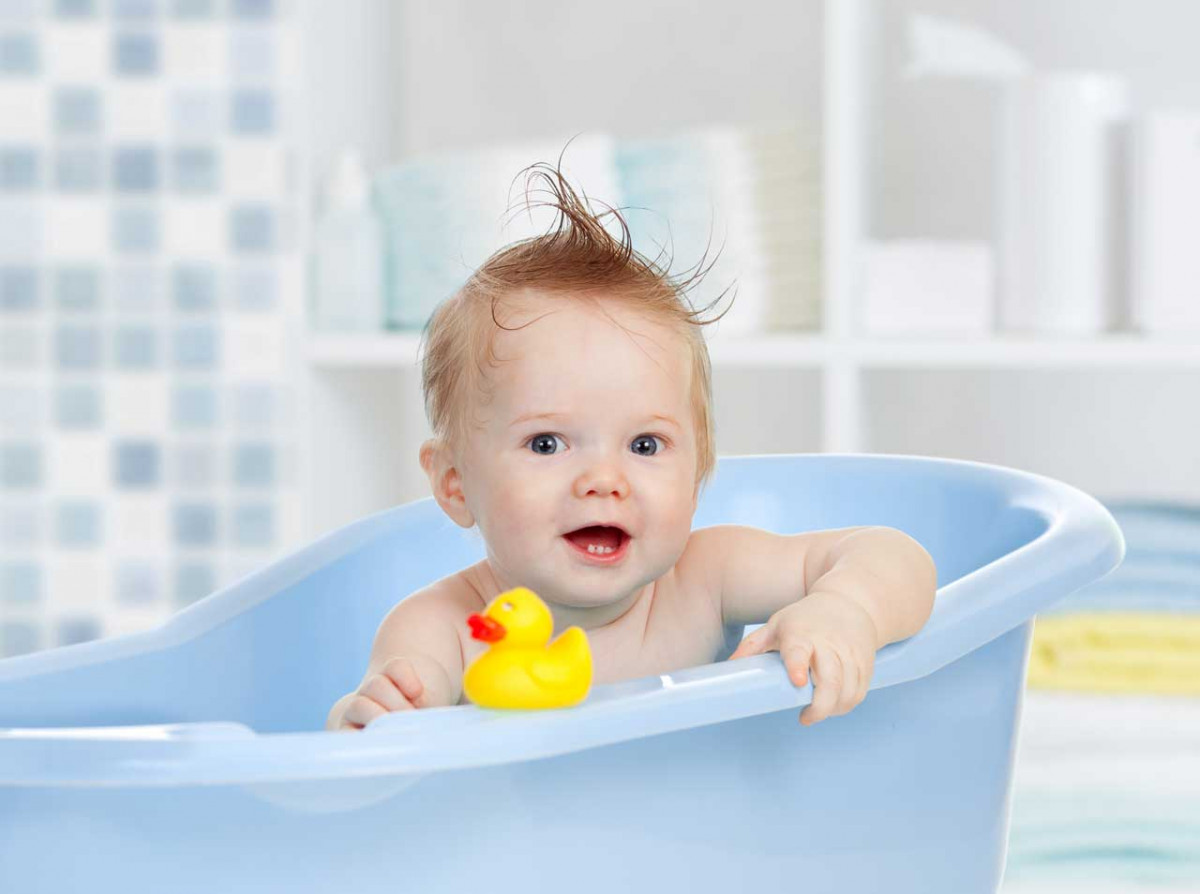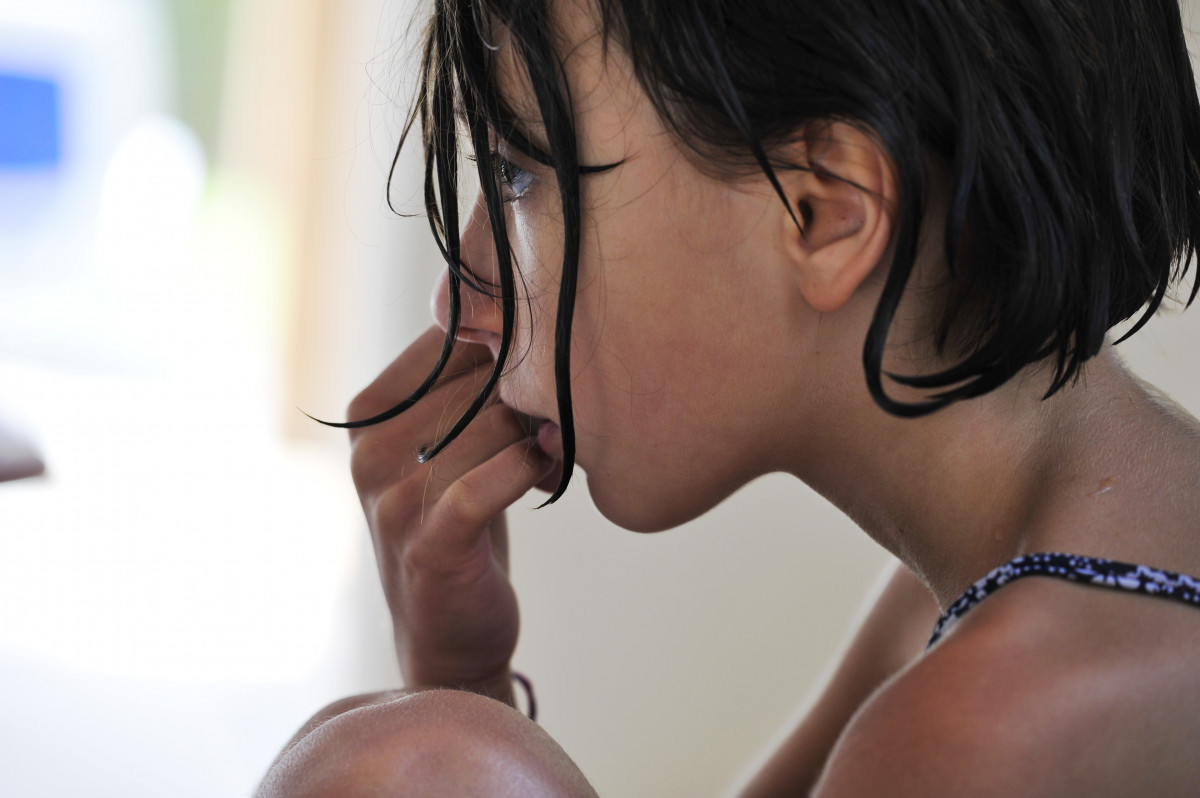Reading time: 4 minutes Babies and toddlers go through different phases in which they suddenly develop fears. There is not always a specific reason why children develop fear of bathing. Small changes often help to make water-shy children happy with the wet element.

10 tips take away the fear of bathing for children
Why are children afraid of bathing?
Most children feel at home in the water. Babies are familiar with the wet element because they are enveloped in amniotic fluid during pregnancy. After the birth, however, many impressions patter on the child. A little something is enough to unsettle the baby. A bright light in the bathroom or a bath tub that is too large quickly leads to discomfort and thus to a greater or lesser aversion to bathing.
Infants often develop fear of the water when they experience uncomfortable situations. It is enough to dip your head briefly under water or to get soap in your eyes, it doesn’t like bathing anymore. It is also not uncommon for children to fear the water from one day to the next for no apparent reason.
In their development, children go through several phases in which they seem to be afraid of everything possible for seemingly no reason. If you take children’s fears seriously, they will learn to deal with, understand and overcome fear.
10 tips for water-shy children
1. Take your child’s fear seriously:
The top priority for parents is to take the child’s fear seriously. This is not always easy if the child screams hysterically at the sight of the tub with bath water. It makes little sense to explain that the water is completely harmless. Think about what you’re afraid of.
Fear of spiders or mice is just as unfounded, because the small animals are usually harmless. So never laugh at your child and avoid extreme water confrontations. You only achieve the opposite and increase the aversion. It helps your child if you respect the fear of bathing and look for solutions together with the child.
2. Change the environment for babies:
With babies in particular, it is often sufficient to change rooms. Perhaps the previous seaside resort was too brightly lit. Maybe the bathroom echoes. Or the temperature in the room was too cool. Next time, put the bathtub in the kitchen or living room. Replacing the bathtub can also help.
Maybe the baby feels more secure in a narrow bath bucket. It was always cramped in my stomach. Make sure that your baby touches the legs and bottom of the tub wall or floor when bathing.
3. Change the environment for toddlers:
If your child is afraid of bathing, also change the spatial conditions. Maybe your child is afraid of the large bathtub. In this case, the child bathes in a children’s bathtub or in a plastic laundry basket. Find the replacement tub together. The child can also paint them brightly or stick them with stickers to build a positive relationship.
4. Adjust water depth:
If a child is panicky about the water, he or she initially sits in the tub without water. So it can reduce initial fears in the dry. The next step is to fill the floor with water. Once your child has got used to it, gradually increase the water level. However, this method only works if your child trusts you and you always keep to the agreements with the child.
5. Caution faucet:
Some children find the tap dangerous because water seems to flow through it endlessly. Wrap a scarf or towel around the tap. Or the child’s favorite stuffed animal "guards" the rooster. This way your child knows that no water flows out of the tap during bathing. If you want more water, fill warm water into a container in the kitchen. Your child will then pour it out yourself.
6. rubber duck and co .:
Provide distraction when bathing. Bath toys or simple cups fascinate the child and ensure that they are not focused on their fears all the time. The child can also delight in crackling bath foam. But it can also happen that your child finds the foam threatening. Try the bath additive in the sink first.
7. Protect eyes from water splashes:
For many children, it is bad if you have water in their eyes to get. Children’s diving goggles can help here. It is also very useful when children do not like to have their hair washed.
Read this Tips, how to take away the fear of washing hair from children.
8. Bathing fun with parents:
For children, there is no better pleasure than bathing with mom or dad. Children who are afraid of water also feel safe and trust themselves much more. However, this method only works if the child trusts the parent. If you bathe with an anxious child, take care not to unsettle them with violent movements or splashes.
9. Role reversal:
Children lose their fear of bathing faster if they take on the role of parents. Take a bath and ask your child, she with wash the washcloth. It can also have a positive effect on toddlers if they wash their doll or washable cuddly toy.
10. Stay patient:
If a baby or child is afraid of bathing, you need a lot of patience. Because as soon as you put pressure on your child, the aversion to the water will increase even further. Before the bathing day turns into a stressful day for you and your child, refrain from bathing.
Your child will also get clean if you wash them with a washcloth. Hand puppet-style washcloths with funny motifs for children are recommended. Make the washing ritual a fun game. The more positive experiences the child associates with washing / bathing, the quicker it gets used to the water.
Photo credit: Oksana Kuzmina /stock.adobe.com
PS: Quality management is important to us!
Please let us know how you like our contribution. To do this, click on the asterisks shown below (5 asterisks = very good):
RELATED ITEMS
-

How children overcome the fear of swimming
Reading time: 3 minutes Not every child is a born water rat. On the contrary, there are many children who are afraid of the water. Parents need…
-

Fear of class work – 15 tips against exam anxiety
Exam anxiety is common. It prevents children from showing what they are made of. Once the fear of class work is there, it says:…
-

3 tips to overcome the fear of darkness
by Sebastian D. Kraemer · September 22, 2017 Overcoming fear of darkness The fear of darkness is a primal fear of humanity. If the…
-

Tips for lowering fever in children – I am a mother
In this article, we will give you tips on how to lower fever in children. Children often have a fever because their bodies have a variety of pathogens…
